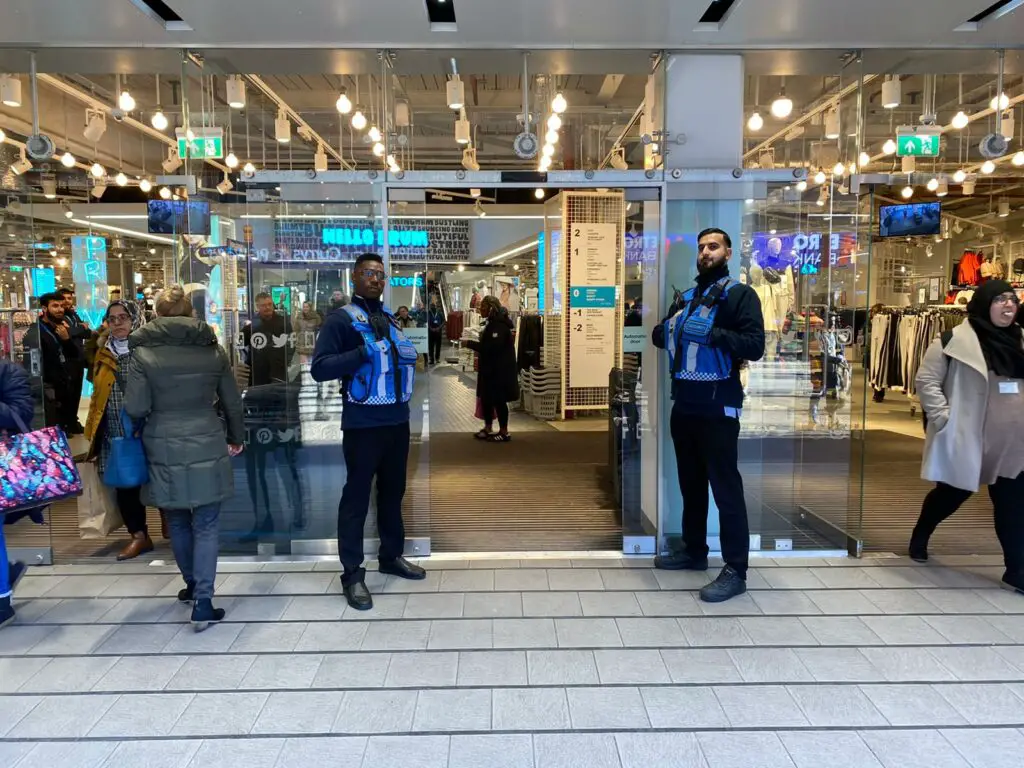It is a multifaceted discipline aimed at safeguarding storefronts, inventory, employees, and customers from various threats and risks. It encompasses a wide range of measures, technologies, and strategies designed to deter theft, prevent vandalism, and ensure the safety and security of retail environments. In this inclusive guide, we'll explore the anatomy of this security, delving into the key components and best practices that contribute to an effective security posture for your storefront.
The Role of Retail Security in Protecting Your Storefront
The storefront serves as the first line of defense against potential threats, making it essential to implement robust security measures to safeguard this critical area. Solutions such as access control systems, surveillance cameras, and perimeter alarms help deter unauthorized access and detect suspicious activity in and around the storefront. Additionally, physical barriers such as security gates, bollards, and reinforced glass provide added protection against forced entry attempts, minimizing the risk of burglary and vandalism.
Securing Inventory
Inventory represents a significant investment for retailers, making it a prime target for theft and shrinkage. Retail security plays a vital role in protecting inventory assets and minimizing losses through various strategies and technologies. Inventory management systems, RFID tagging, and electronic article surveillance (EAS) are commonly used to track, monitor, and secure merchandise throughout the supply chain and within the retail environment. By implementing these solutions, retailers can deter theft, identify potential vulnerabilities, and optimize inventory control processes to reduce shrinkage and improve profitability.
Employee Training
Employees are often the frontline defenders of retail security, making it essential to provide inclusive training and awareness programs to empower staff to identify and respond effectively to security threats. Training sessions should cover topics such as theft prevention techniques, emergency procedures, and customer interaction strategies to equip employees with the knowledge and skills needed to mitigate risks and ensure a safe and secure shopping environment. Additionally, fostering a culture of vigilance and accountability among staff encourages proactive participation in security efforts, enhancing overall effectiveness and responsiveness.
Utilizing Technology
Advancements in technology have revolutionized the landscape of retail security, offering innovative solutions and tools to address evolving threats and challenges. Video surveillance systems with high-definition cameras, advanced analytics, and remote monitoring capabilities provide real-time visibility into in-store activities, enabling proactive threat detection and response. Furthermore, biometric access control systems, smart locks, and alarm systems offer enhanced security features such as multi-factor authentication and remote access control, strengthening the overall security posture of retail environments. By leveraging technology-driven solutions, retailers can stay one step ahead of potential threats and safeguard their storefronts with greater efficiency and effectiveness.
Embracing Innovation
Innovative technologies continue to drive advancements in it, offering new opportunities to enhance protection, efficiency, and intelligence. Artificial intelligence (AI) and machine learning algorithms are revolutionizing video surveillance systems by enabling proactive threat detection, behavior analysis, and anomaly detection. Retailers can leverage these capabilities to identify suspicious patterns, detect potential threats in real-time, and mitigate risks before they escalate. Additionally, biometric authentication methods such as facial recognition and fingerprint scanning offer enhanced access control and authentication capabilities, reducing reliance on traditional keys or access cards. By embracing innovation in this security, retailers can stay ahead of evolving threats, optimize operational efficiency, and create safer, more secure environments for employees and customers alike.
Conclusion
In conclusion, the anatomy of retail security encompasses an inclusive framework of measures, technologies, and strategies aimed at safeguarding storefronts, inventory, employees, and customers from various threats and risks. By implementing robust security solutions, prioritizing employee training and awareness, and leveraging cutting-edge technologies, retailers can establish a strong security infrastructure that deters theft, prevents losses, and ensures the safety and security of their retail environments. Security is an ongoing process that requires vigilance, adaptability, and collaboration among stakeholders to address emerging threats and maintain a secure shopping environment.







